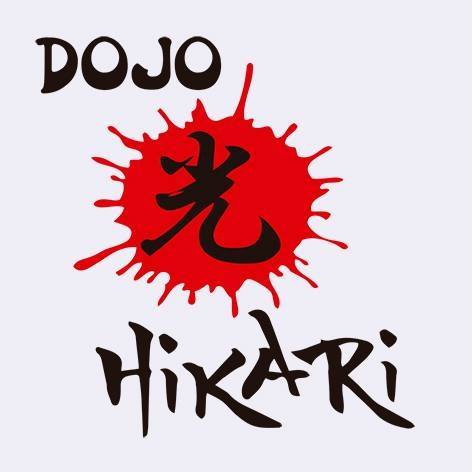Some people call Supawat Thonglamul one of the art masters and I agree with them. He is a Thai contemporary artist who intentionally uses air brush to paint an entire painting as he creates contemporary art work. Normally, we see the use of air brush to paint pictures of Japanese cartoon characters on buildings, cars, motorcycles or even buses and some use air brush on small plastic cartoon figures, cloth or souvenirs.
Interestingly, air brush can seamlessly blend well with the theme of Thai art and culture. Supawat utilizes air brush to express his vision of Thai culture and society with the atmosphere of night, soft light and shade. He also includes diverse diffused colors and uses them as the distinctive point for atmosphere in the dark as he presents the optical illusion that the meaning is quite direct but the image is not immediately clear.
One afternoon I invited Supawat to talk about his current work.
JY: In my opinion, your works frustrate and annoy many people including me because they seem out of focus and very dark.
ST: (smiling) Where did you see my work?
JY: Actually, I saw your paintings before but at that time I did not know who painted them. I know you received the Bualuang Award from the Bangkok Bank many years ago. I also remembered well that a picture containing hot air paper balloons was the 23-year anniversary of your art career.
ST: I got the bronze prize from that competition. That picture is about the merit festival of Northern people called "Inthakin pillar celebration" in which we can see the merit making, celebration. This festival expresses the Lanna culture and is beneficial for the tourism in the north of Thailand. The festival is held in May or June every year and lasts for seven days.
JY: "Inthakin pillar celebration." This festival name is so mesmerizing.
ST: In the picture, you can see people light their candles in the temple along with groups of sand pagodas that people made during the day. They bring candles to pay respect to the sacred Inthakin pillar in the night. I was impressed by the atmosphere and tried to capture this moment in my painting.
JY: I saw a picture of a monk who swept the floor and burnt the grasses. The smoke spread slowly in the air. What was your intention?
ST: My intention in this picture is that we should release and burn evil with goodness. Lighting candles is a symbol that supports this idea. Furthermore, it is commonly believed that releasing hot air paper balloons to the air can take sadness and sickness away. Northern people have traditionally done this for a long time and I think this is a profound strategy to encourage people to fight against sadness and unhappiness. Likewise, the Chinese also burn candles and papers in their festivals. I think this is a similar concept.
JY: How big is your typical picture?
ST: About 1.35m. It is quite large.
JY: Is it correct that you use only air brush with everything in your painting?
ST: Certainly, the work must be finished quickly because the instrument is not convenient for long time work. The color preparation step is a bit tricky and is the main concern when you use air brush on your work. However the result is very satisfying and unique compared with normal brush paintings. I also would like to add that the colors are filtered many times, otherwise, the tip of air brush will become blocked and it is very time consuming to repair. To paint a meaningful picture about temples and Buddha statues, it depends on many things including correct information about local tradition along with correct proportion of Buddha statues and temples. But I also add my imagination in the painting and it is my intention to present in this way. We call works by artists who try to include religious concepts, "floating world". It means everything in the world is uncertain and always moves. My works deal with transparency and opacity and distance and depth. The atmosphere in the picture attempts to clarify the uncertainty of life.
The conversation after this was about Buddhism and temples that Supawat attended and captured in his paintings. At the end, he stated his strong motivation to create more outstanding work for Buddhism.
Supawat Thonglamul
He is a Thai contemporary artist who intentionally uses air brush to paint an entire painting as he creates contemporary art work.It can be said. Just one in Asia !!.
Civilization Watercolor อารยธรรมสีน้ำ
Civilization Watercolor อารยธรรมสีน้ำ :ศุภวัตร ทองละมุล
จานีน ยโสวันต์
บางคนเรียกคุณศุภวตร ทองละมุล ว่าเป็นหนึ่งในผู้ชำนาญงานศิลปะและ
ดิฉันก็เห็นด้วย เขาเป็นศิลปินร่วมสมัยชาวไทยที่ตั้งใจใช้พู่กันลม(แอร์บรัช)
วาดภาพทั้งภาพเมื่อเขาสร้างสรรค์งานศิลปะร่วมสมัย โดยทั่วไปแล้วเราจะ
เห็นการใช้พู่กันลมวาดภาพการ์ตูนญี่ปุ่นบนอาคาร รถยนต์ จักรยานยนต์และ
แม้กระทั่งรถบัสโดยสาร บางคนใช้พู่กันลมลงสีตัวการ์ตูนพลาสติก ผ้าต่างๆ
และของชำร่วย
ที่น่าสนใจก็คือว่าพู่กันลมสามารถกลมกลืนไปกับงานแนวศิลปะและ
วัฒนธรรมไทย คุณศุภวตรใช้พู่กันลมเพื่อบรรยายวัฒนธรรมและสังคมไทย
ในมุมมองของเขาโดยใช้บรรยากาศในยามค่ำคืน แสงอันนุ่มนวลและเงา
เขายังได้รวมสีที่ฟุ้งกระจายหลายสีและใช้สีเหล่านั้นในจุดที่ต้องการเน้น
สำหรับบรรยากาศในความมืด เขายังได้นำเสนอภาพลวงทางสายตาซึ่งมี
ความหมายค่อนข้างตรงแต่ภาพที่เห็นนั้นยังไม่ค่อยชัดเจน
ในบ่ายวันหนึ่งดิฉันได้เชิญให้คุณศุภวตร มาพูดคุยเกี่ยวกับงานในปัจจุบัน
ของเขา
จานีน: ในความคิดของดิฉัน งานของคุณสร้างความระคายเคืองใจให้กับคน
หลายคนรวมทั้งดิฉันเพราะว่ามันไม่ชัดเจนและมืดมาก
ศุภวตร: (ยิ้ม) คุณเห็นงานของผมที่ไหนหรือครับ
จานีน: อันที่จริงดิฉันได้เห็นภาพเขียนของคุณมาก่อนแล้วแต่ดิฉันยังไม่
ทราบว่าใครเป็นผู้เขียน ดิฉันทราบมาอีกว่าคุณได้รับรางวัลงานบัวหลวงจาก
ธนาคารกรุงเทพหลายปีมาแล้วและยังจำได้ดีว่าภาพเขียนรูปโคมลอยเป็น
งานครบรอบ 23 ปีที่คุณทำงานด้านศิลปะ
ศุภวตร: ผมได้รางวัลเหรียญทองแดงจากการแข่งขันครั้งนั้น ภาพนั้น
เกี่ยวกับการทำบุญของชาวเหนือที่เรียกว่า "งานเฉลิมฉลองเสาอินทขิล"
ซึ่งเราจะเห็นภาพการทำบุญ การเฉลิมฉลองเสาหลักเมือง งานเทศกาลนี้
แสดงถึงวัฒนธรรมล้านนาและเป็นประโยชน์สำหรับการท่องเที่ยวใน
ภาคเหนือของประเทศไทย งานเทศกาลจัดขึ้นในเดือนพฤษภาคมหรือ
มิถุนายนโดยจัดงานเป็นเวลาทั้งหมดเจ็ดวัน
จานีน: งานเฉลิมฉลองเสาอินทขิล ชื่อของงานเทศกาลดูไพเราะดีนะคะ
ศุภวตร: ในภาพนี้คุณจะเห็นผู้คนจุดเทียนในวัดและกองเจดีย์ทรายที่ผู้คน
ก่อในเวลากลางวัน พวกเขานำเทียนมาเพื่อแสดงความเคารพเสาอินทขิล
อันศักดิ์สิทธ์ในเวลากลางคืน ผมรู้สึกประทับใจกับบรรยากาศนี้มากและ
พยายามที่จะถ่ายทอดช่วงเวลาขณะนี้ลงในภาพเขียนของผม
จานีน: ดิฉันเห็นรูปพระสงฆ์กวาดพื้นและเผาหญ้า ควันลอยแพร่กระจายขึ้น
ในอากาศอย่างช้าๆ ความตั้งใจของคุณคืออะไรคะ
ศุภวตร: ความตั้งใจของผมในภาพนี้คือว่าเราควรจะปลดปล่อยและแผดเผา
ความชั่วร้ายด้วยความดีงาม การจุดเทียนก็เป็การสนับสนุนแนวคิดนี้
นอกเหนือจากนี้เป็นที่เชื่อกันโดนทั่วไปว่าการปล่อยโคมลอยกระดาษขึ้นไป
ในอากาศจะนำพาความเศร้าและความเจ็บป่วยออกไป ชาวเหนือทำแบบนี้
ตามประเพณีมาเป็นเวลานานแล้วและผมคิดว่านี่เป็นกลยุทธที่ลึกซึ้งที่จะ
กระตุ้นให้ผู้คนต่อสู้กับความเศร้าและความทุกข์ ในกรณีเดียวกันชาวจีนก็จุด
เทียนและเผากระดาษในเทศกาลต่างๆ ผมคิดว่านี่เป็นหลักการเดียวกัน
จานีน: ภาพของคุณโดยปกติมีขนาดเท่าไหร่
ศุภวตร: ประมาณ 1.35 เมตรครับ รูปมีขนาดค่อนข้างใหญ่
จานีน: ถูกต้องหรือไม่ที่คุณใช้แต่พู่กันลมกับทุกอย่างในภาพวาดของคุณ
ศุภวตร: แน่นอนครับ ผลงานต้องทำให้เสร็จด้วยความรวดเร็วเพราะว่า
อุปกรณ์ไม่สะดวกกับการทำงานเป็นเวลานาน ขั้นตอนการเตรียมสีมีความ
ยุ่งยากเล็กน้อยแต่สิ่งสำคัญคือตอนที่ใช้พู่กันลมในการทำงาน อย่างไรก็
ตามผลงานที่ออกมาก็เป็นที่น่าพอใจและมีเอกลักษณ์เฉพาะตัวเมื่อ
เปรียบเทียบกับการวาดรูปด้วยแปรงแบบธรรมดา ผมอยากจะบอกเพิ่มเติม
ว่าสีที่ใช้ต้องมีการกรองหลายครั้ง ถ้าไม่ทำเช่นนั้นหัวของพู่กันลมจะอุดตัน
และเสียเวลามากในการซ่อมแซม การทีจะวาดภาพที่มีความหมายสื่อถึงวัด
หรือพระพุทธรูปนั้นต้องอาศัยหลายสิ่งหลายอย่างรวมทั้งข้อมูลที่ถูกต้อง
เกี่ยวกับประเพณีในท้องถิ่นพร้อมไปกับสัดส่วนที่ถูกต้องของพระพุทธรูป
และวัดแต่ผมได้เพิ่มเติมจินตนาการของผมเข้าไปในภาพวาดและนี่เป็น
ความตั้งใจของผมที่จะนำเสนอในลักษณะนี้ เราจะเรียกการทำงานของ
ศิลปินที่พยายามจะรวบรวมแนวคิดทางศาสนาว่า "โลกที่กำลังล่องลอย"
หมายความว่าทุกสิ่งในโลกนั้นไม่แน่นอนและเคลื่อนที่อยู่เสมอ งานของผม
เป็นเรื่องของความโปร่งแสง ความคลุมเครือ ระยะทางและความลึก
บรรยากาศในภาพพยายามให้ความกระจ่างถึงความไม่แน่นอนของชีวิต
บทสนทนาภายหลังจากนี้เป็นเรื่องเกี่ยวกับศาสนาพุทธและวัดที่ ศุภวตร
เคยไปทำงานจิตรกรรมฝาผนัง ท้ายที่สุดเขาพูดถึงความตั้งใจอันเข้มแข็งที่
จะสร้างสรรค์ผลงานอันยอดเยี่ยมเพื่อศาสนาพุทธต่อไป
































